We analyse the students' funniest, most unusual and best-known protest posters.
By Regine Hader
People are talking about them - euphorically, critically, pedantically. Some praise them for finally getting involved in politics again, for being more courageous than their big brothers and sisters, who are unabashedly vying for their boss's recognition in the mornings and in the afternoons optimising themselves in the fitness studio for the sake of more Tindermatches. Others disparagingly opine that these are just children who pretend commitment in order to get out of a double math lesson.
Politicians argue about Fridays for Future like couples about their relationship problems in prime-time German TV: unimaginatively and self-centred.Is it clear from their protest posters what their Friday activities are all about? What rhetoric do they use? Together with Dr. Constanze Spieß, discourse linguist from the University of Graz, we analyse the funniest, most unusual and best-known posters from all over Germany.
Klimawende statt Weltende
(i.e. A climate turning-point instead of the end of the world)
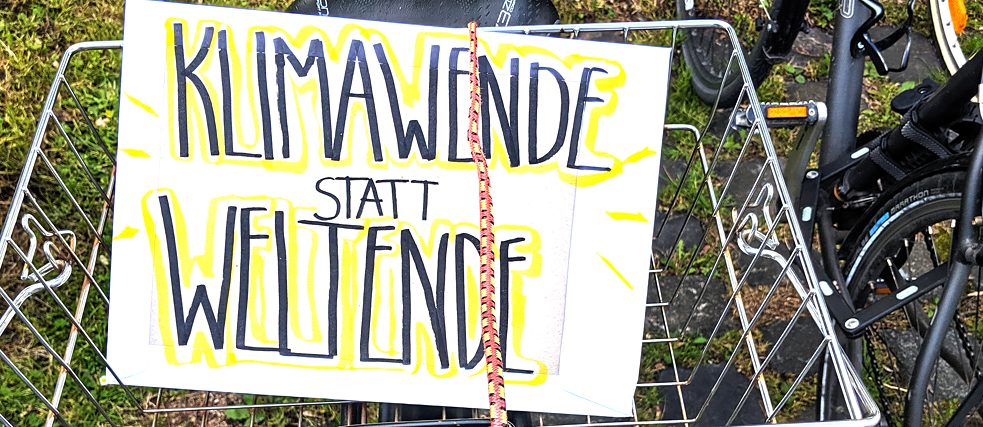 Photo: Regine Hader
Photo: Regine Hader
Posters have a long political history: In ancient times, legal texts were publicly displayed on wooden panels, and in the 16th century the first political leaflets were stuck to house walls. "A characteristic feature is the massive compression: grievances and demands are exaggerated and expressed in the narrowest of spaces. This poster, for example, works with a dichotomous figure, in other words with pairs of opposites," explains the linguist. "It is interesting that the positive word 'climate change' is at the beginning and the stigma word 'end of the world' follows. By starting with the positive alternative, the pupils make the way out visible: there is already agreement and strategies in place to end the massive environmental pollution. The demonstrators remind us that their demands are not utopian, but absolutely realistic.
Grünkohl statt Braunkohle
(i.e. Kale instead of brown coal)
 Photo (Detail): Patrick Graf © picture alliance / Geisler-Fotopress
Photo (Detail): Patrick Graf © picture alliance / Geisler-Fotopress
"The rhyming scheme is being used here," explains Dr. Spieß. Even if the short rhymes are sometimes imperfect, they are easy to remember. Slogans, catchy sayings and songs are a major part of protest culture. Almost every large movement or revolution is accompanied by a song or a "battle cry". In France the revolutionary song "Marseillaise" became the national anthem, in the 19th century the Silesian weavers sang during their revolt against the first factory owners and Bob Dylan's "The Times They Are a-Changin'" still stands for the folk movement of the 1960s. Ten years later, the socially critical band "Ton Steine Scherben" attacked hypercapitalism. Rhyming statements are also disseminated through posters in today's leading visual media such as Instagram.
Profis Abwählen
(i.e. Deselect professionals)
 Photo (Detail): Oliver Auster © picture alliance/dpa
Photo (Detail): Oliver Auster © picture alliance/dpa
"Posters always call up an entire discourse," says Dr. Spieß. With the word "professional", the student depicted refers directly to FDP politician Christian Lindner's tweet to Fridays for Future. He tweeted about climate policy: "This is for professionals." With her sign, the demonstrator turns the balance of power around: she threatens that her generation will vote out the self-proclaimed climate professionals in the guise of professional politicians. "The student imitates Christian Lindner's strategy. Instead of talking about the problem per se, she draws attention to people and power relations. In doing so, she invokes a discourse that constantly denies the protesters their competence."
The earth is getting hotter than my imaginary boyfriend
 Photo (Detail): © picture alliance / Jochen Eckel
Photo (Detail): © picture alliance / Jochen Eckel
This demonstrator places herself somewhere between self-irony and gallows humor. The contrast to her imaginary boyfriend highlights just how real climate change is. The ambiguity of the word "hot" reinforces the contradiction: with regard to sexual attraction, the term is cheerful; if you think of the climate, it feels threatening. The change of meaning emphasises that it is time to rethink the issue.
Constanze Spieß also recognizes a rhetorical stylistic figure called metonymy, in which an expression in the figurative sense is used: "Planet in this context stands for all the negative processes of climate change, which are actually very complex and are not addressed in detail. Overall, it is debatable whether the comparison is more successful."
Früher war der Fisch in der Packung, heute ist die Packung im Fisch
(i.e. In the past the fish was in the packaging, now the packaging is in the fish)
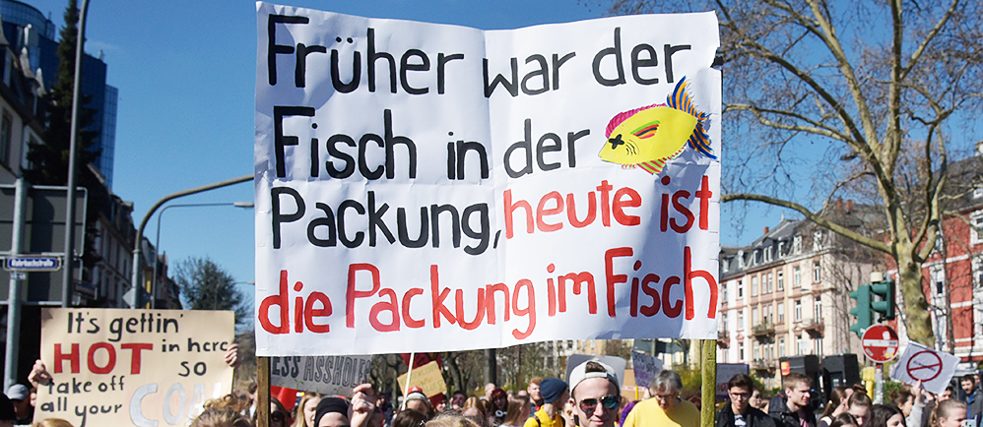 Photo (Detail): © picture alliance / Bernd Kammerer
Photo (Detail): © picture alliance / Bernd Kammerer
"Observations are typical of the rhetoric of protest posters," says the researcher. In this way, the protesters emphasise the dramatic nature of the situation. By pointing to facts such as microplastics in fish stomachs, they prevent their concerns from simply being argued or explained away. By juxtaposing past and present conditions, they not only illustrate the gap between generations, but also point out how threatening the current situation is compared to the past.
We can’t let it be
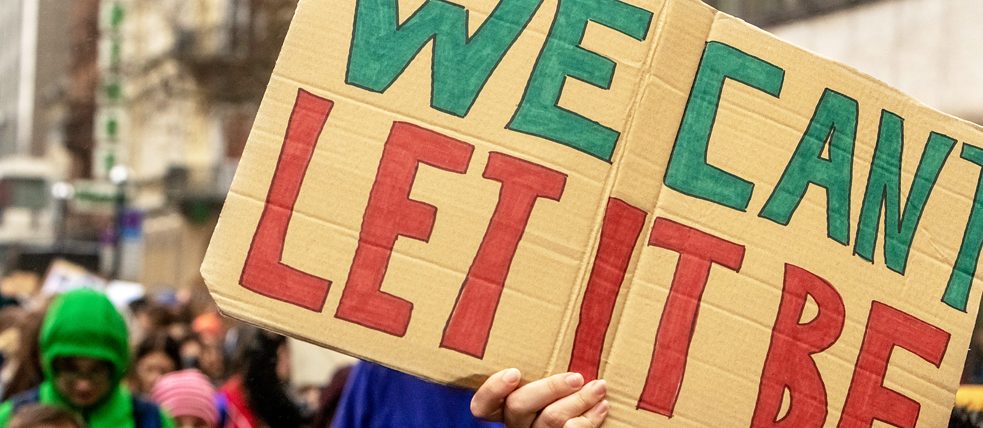 Photo: © picture alliance / ZUMAPRESS.com
Photo: © picture alliance / ZUMAPRESS.com
With this musical borrowing from the Beatles, the young people position themselves in the tradition of peaceful protest. Dr. Spieß doubts whether all of the young people are aware of this history. In the posters of the 11- to 18-year-olds, however, she identifies the peaceful expression of opinion of a generation that grew up in a democracy and is now using its instruments to express its discontent.
Dinosaurier dachten auch, sie hätten Zeit
(i.e. The dinosaurs thought they had time, too)
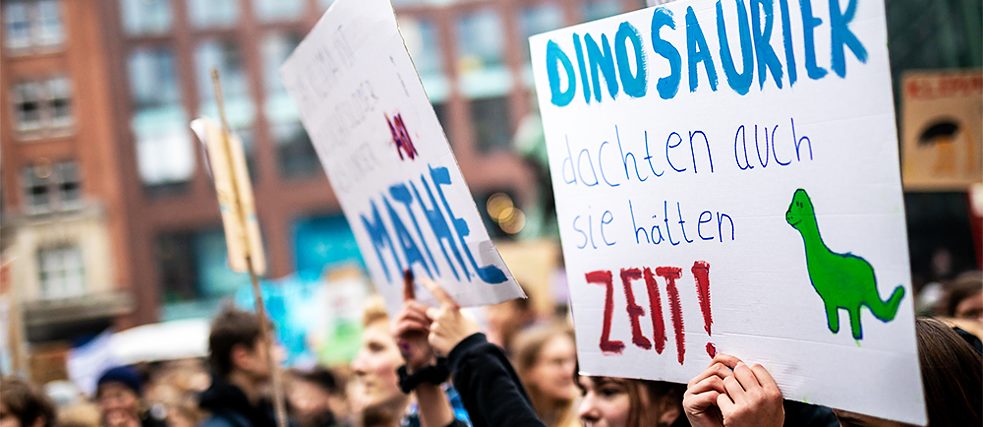 Photo (Detail): © picture alliance / xim.gs
Photo (Detail): © picture alliance / xim.gs
"I think this is a less successful poster," remarks Constanze Spieß with a smile. "After all, the dinosaurs didn't die out through their own fault. But they do have a reputation as sedate animals that are said to have had a poor ability to react - perhaps this is to be understood metaphorically for the course of current political developments?"
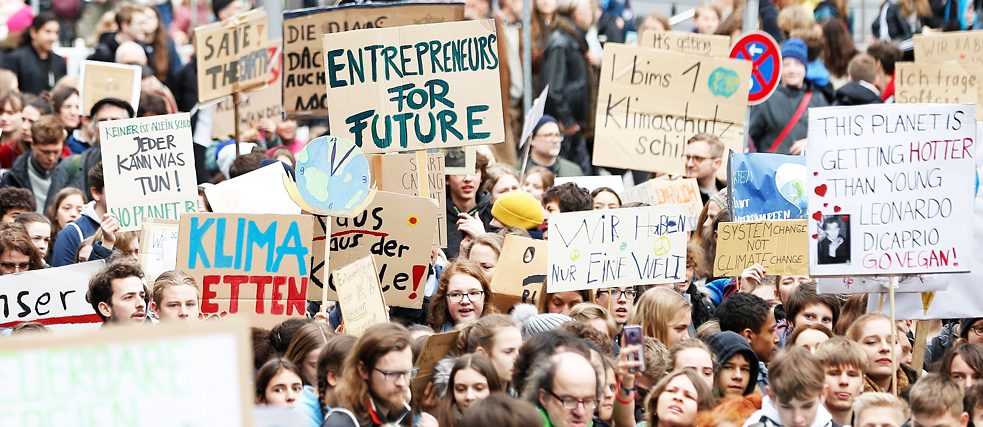 Photo (Detail): Abdulhamid Hosbas © picture alliance / AA
Photo (Detail): Abdulhamid Hosbas © picture alliance / AA
One thing is perfectly clear: the students' creative posters are fundamentally politically motivated. Fridays for Future is not about enforcing a concrete regulation or even a law. Instead, their posters question the rules under which the climate and other major political and social issues have been discussed and decided up until now.
Rhetoric has three levels of effect: ethos, pathos and logos. At the ethos level, the Friday demonstrators work to redistribute the credibility of speakers in the discourse by expressing themselves as a group that is not even entitled to vote. On the level of pathos, they make it clear to politicians and voters how explosive the situation of the world climate is and how great their responsibility is. What remains is the third level of rhetoric: logos. Why don't the students concentrate on this in the case of a scientific phenomenon like climate change? Quite simply: the facts are on their side anyway!
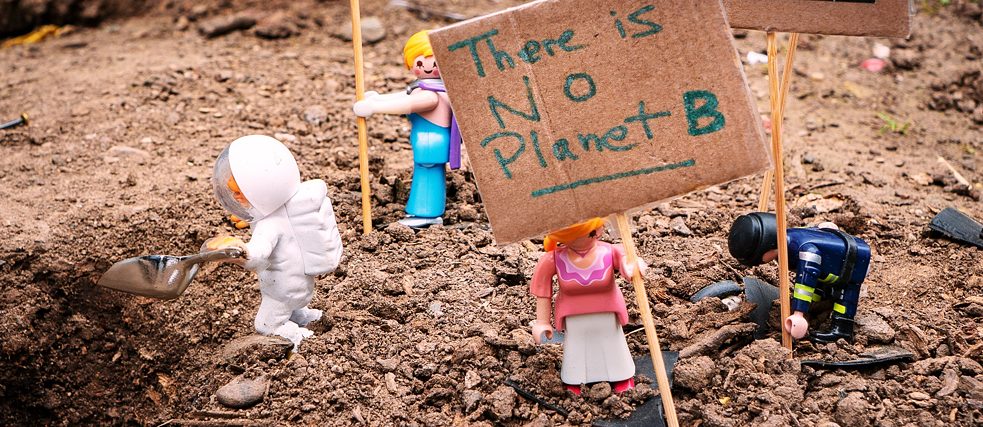








Comments